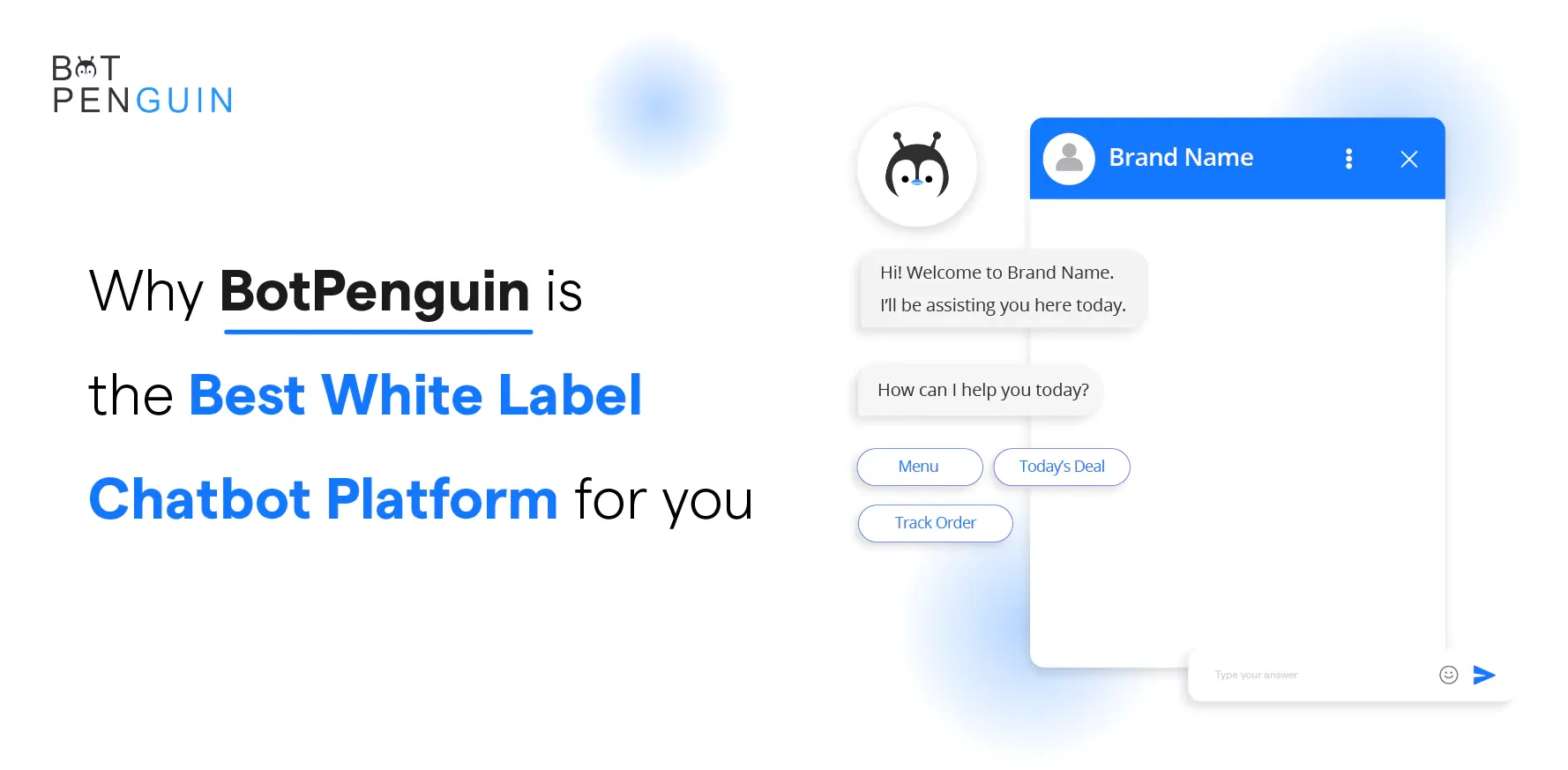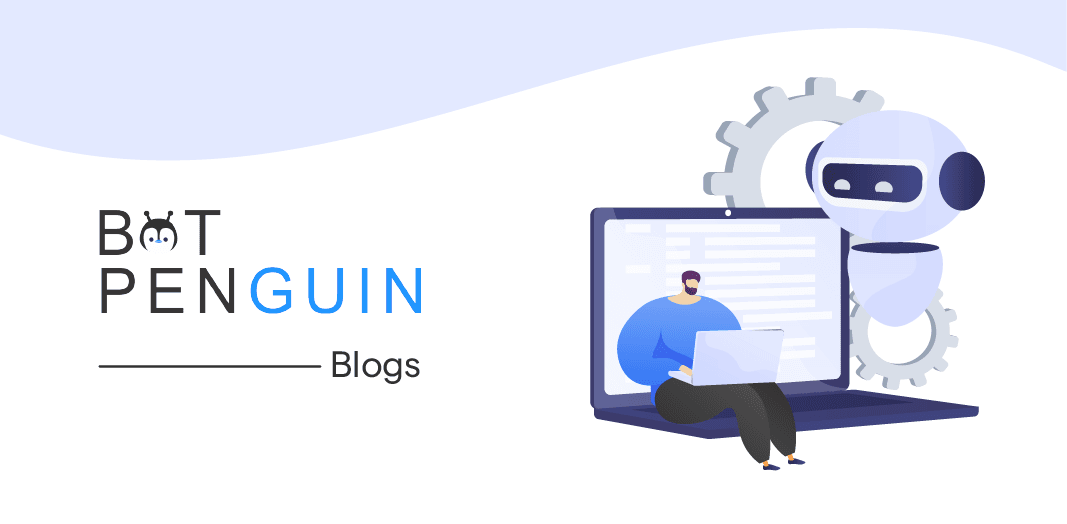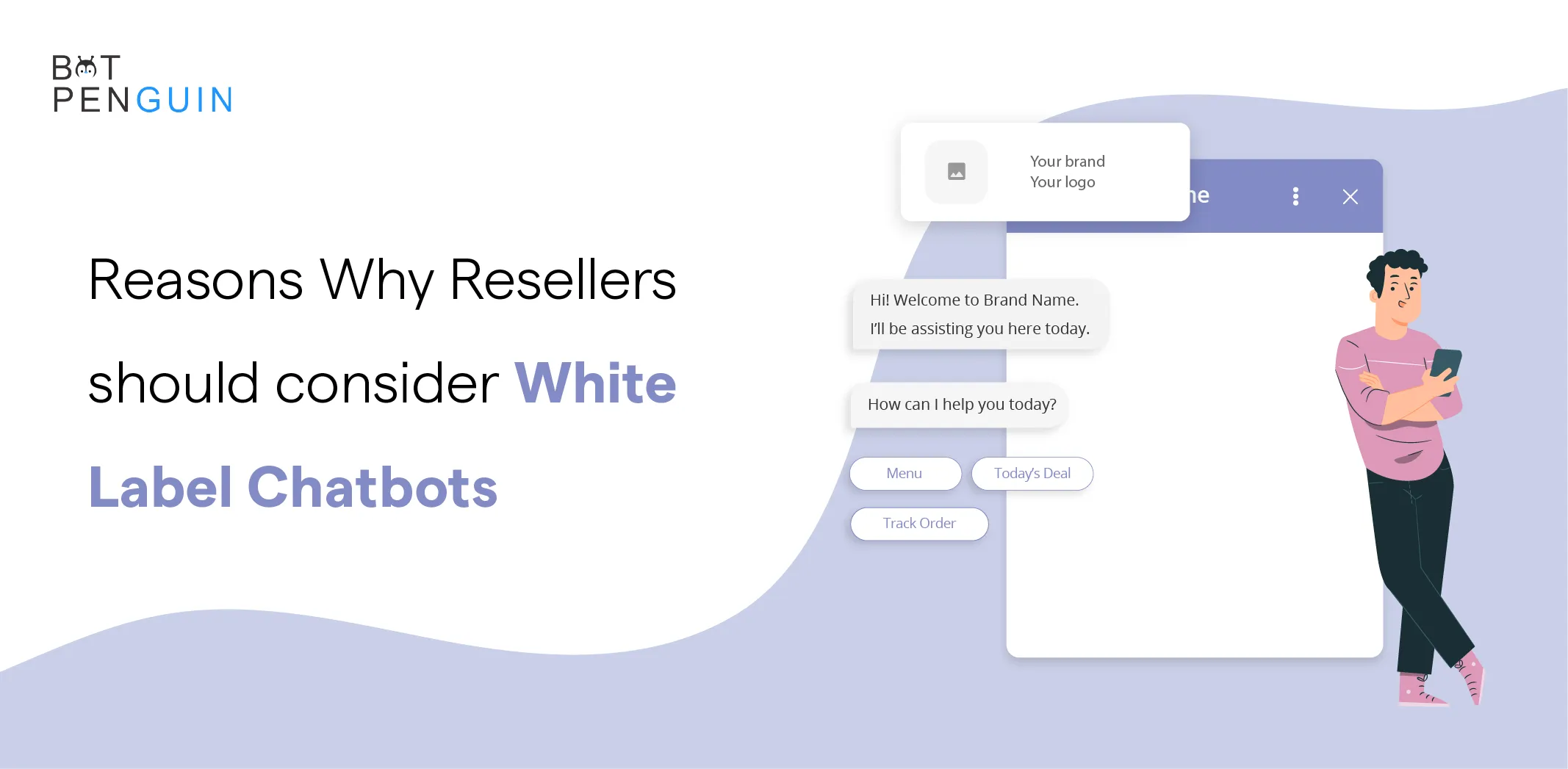Introduction
You’ve probably seen chatbots everywhere.
On websites. On WhatsApp. Even on Instagram.
And you’ve wondered, “Can I build a business around this?”
The short answer? Yes. But figuring out how to start a chatbot business can feel overwhelming.
Where do you begin? What tools do you use? Will people actually pay for it?
Ignore it, and you miss out on a fast-growing market. But get in now, and you could build something big with very little.
This guide breaks it all down — no fluff no jargon — just simple, clear steps.
Why It’s a Great Time to Start a Chatbot Business
If you’ve been thinking about starting something on your own — something smart, flexible, and future-proof — this is it.
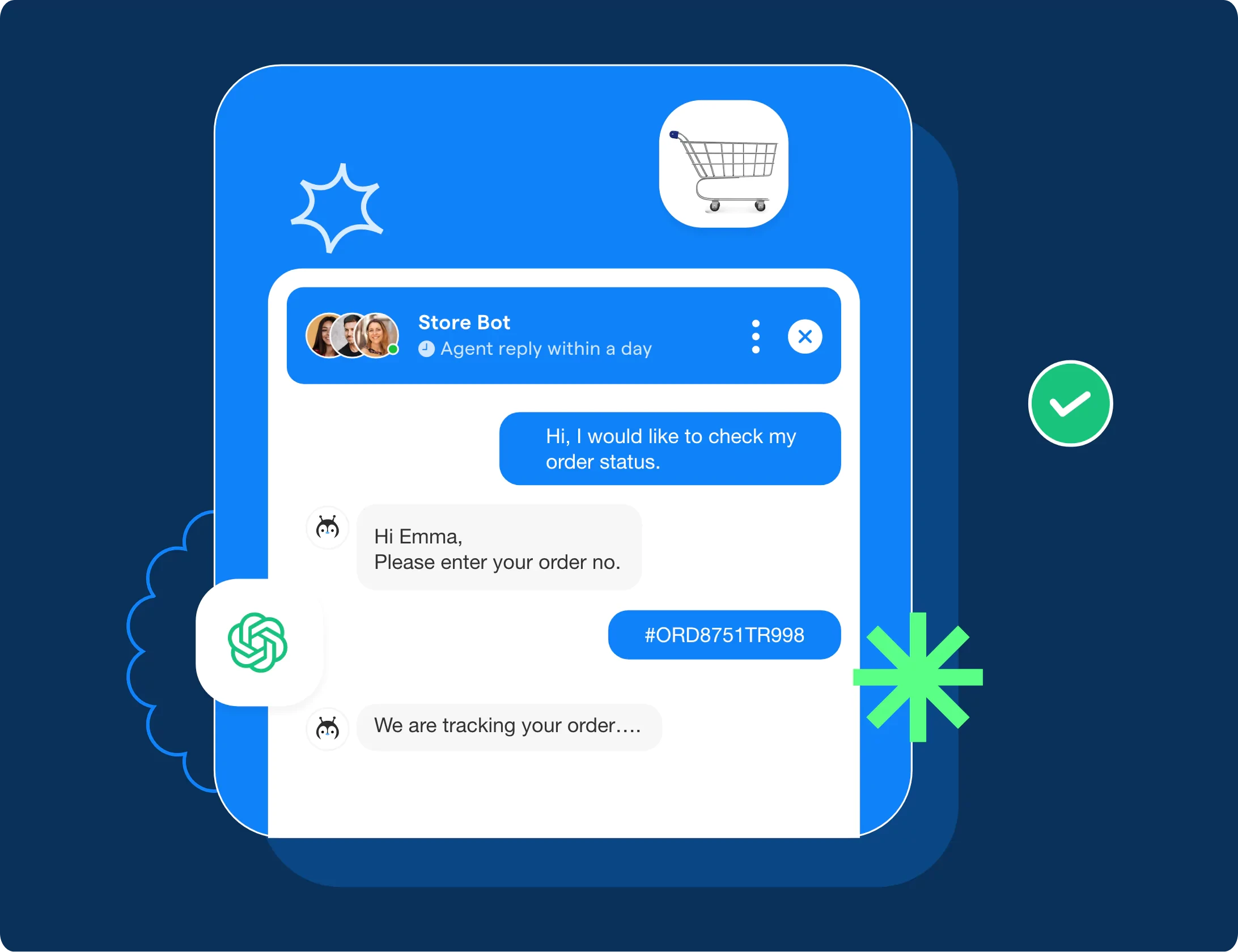
Chatbots aren’t a trend. They’re becoming a tool every business wants. And the best part? You don’t need a huge team, a fancy office, or a ton of cash to get going.
Let’s look at why there’s never been a better time to start a chatbot business.
Explosive Growth in AI, Automation, and Messaging
Let’s be real. Everyone’s talking to AI now.
ChatGPT changed the game. Businesses and customers expect instant replies. They want speed. They want 24/7 help.
That’s where chatbots come in.
Whether it’s answering questions, booking appointments, or guiding purchases — bots can do it all. And they do it fast.
Here’s the thing: the demand for chatbots has gone up not just because they’re smart — but because messaging apps are where people live now.
Facebook Messenger. WhatsApp. Instagram DMs.
People prefer messaging over calling. Businesses know it. They want in.
And you? You can help them get there.
A New Must-Have for Small Businesses
Think about a small bakery or a local gym.
They don’t have a full-time receptionist. They miss calls. Lose leads.
A chatbot solves that. It talks to customers when no one else can. Answers basic questions. Books sessions.
It saves time. Saves effort. And it makes them look more professional.
Once they try it, they stick with it.
And guess what? They’re willing to pay someone like you to set that up.
A Low-Cost and Low Hassle Business Model
❌No warehouse.
❌No inventory.
❌No shipping issues.
To start a chatbot business, you don’t need much.
Just a laptop. Internet. A good no-code tool. And basic skills in communication and problem-solving.
You don’t even need to code. Tools like BotPenguin, ManyChat, or Tidio let you build bots without writing a line of code.
Compare this to starting an eCommerce store or food delivery business — which needs inventory, logistics, and capital.
Here? Your costs are low. But the value you offer is high.
You can charge for setup, monthly support, or both.
It’s lean. It’s scalable. And it’s perfect if you're just starting out.
Recurring Revenue, One-off Builds, and White-Label Opportunities
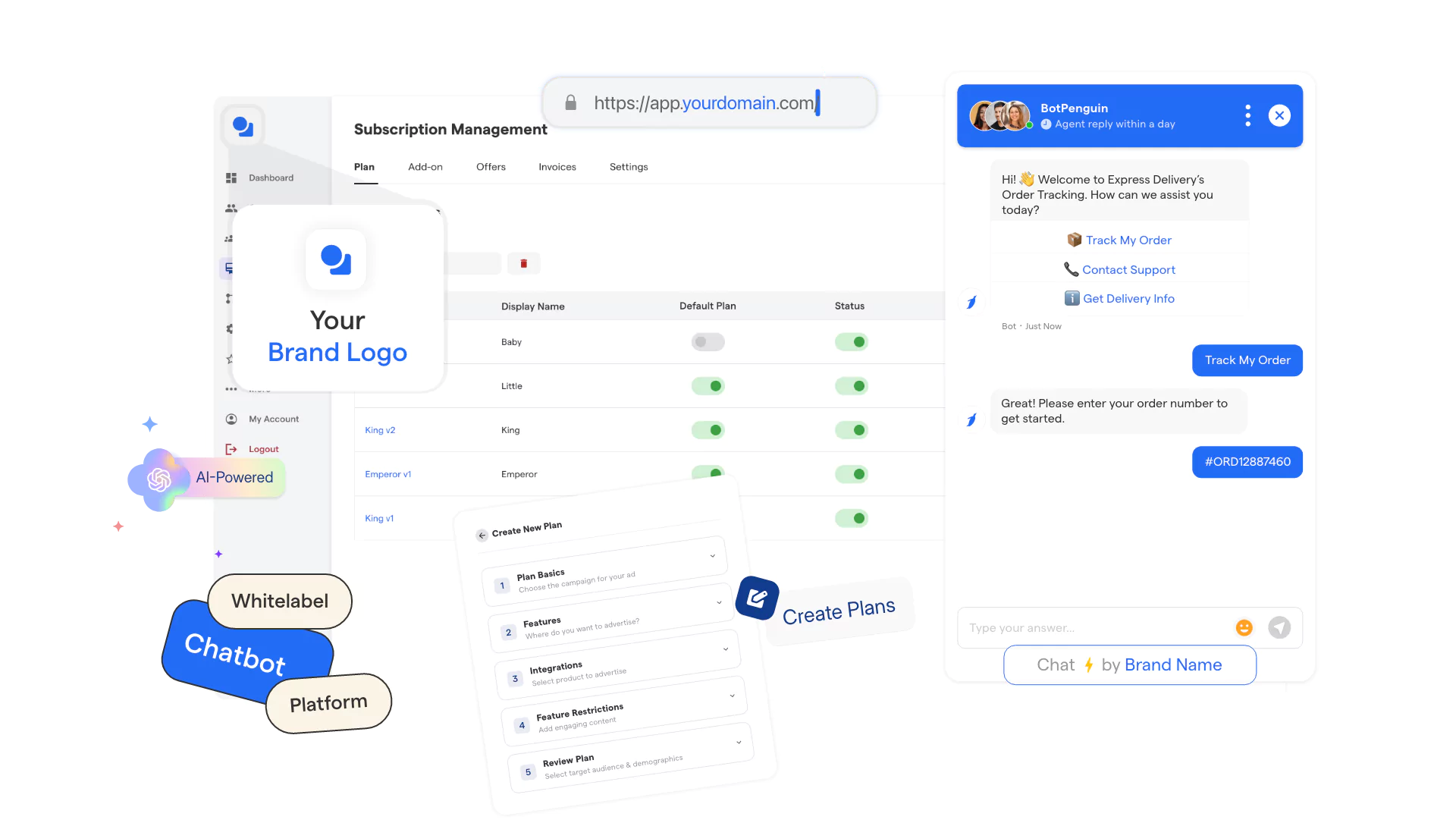
Let’s talk money.
There are multiple ways to earn:
- Build a chatbot once, charge a setup fee.
- Offer monthly maintenance or AI training, and charge a monthly retainer.
- Sell your service under someone else’s brand (white-labeling), and you still make your cut
Here’s a quick example:
You build a bot for a local spa. You charge $300 for setup. Then offer a $49/month plan for ongoing tweaks and updates.
Add 10 clients? You’re at $490/month in recurring income.
And it grows from there.
This isn’t just a one-time gig. It’s a repeatable scale-friendly business.
If you learn how to start a chatbot business the smart way — you can earn steady income while helping small businesses grow.
How Much Does It Cost to Start a Chatbot Business
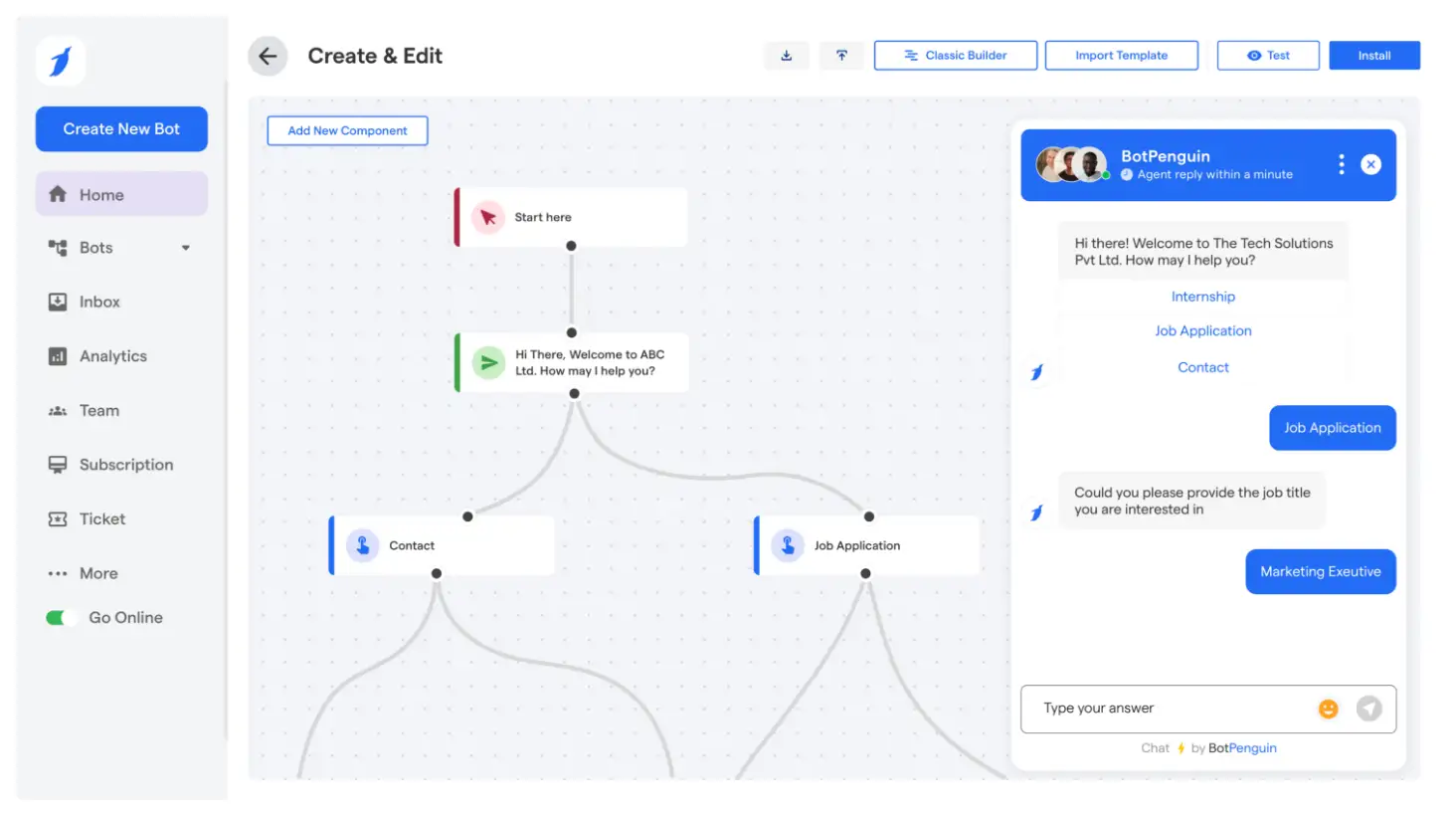
Let’s get real. You’ve probably asked yourself this:
“How much do I actually need to start a chatbot business?”
Good news: It depends on how you want to do it.
The cost can be high, low, or somewhere in between. Each approach has its own setup, skills needed, and speed of return.
Let’s break it down so you can pick what fits your budget and goals best.
Build From Scratch & Spend $10,000+
You’re tech-savvy. You want full control. And you don’t mind going the long way.
- Problem: This route means you’ll need developers, hosting, a UI designer, and maybe an AI engineer. And it adds up. Fast.
- Implication: You could spend $10,000 to $30,000 just to launch your own chatbot platform. And months in development.
Here’s where your money goes:
- Domain and hosting: $100–$300/year
- Frontend + backend development: $7,000+
- Database and cloud services: $500/month+
- Testing and maintenance: $1000+
- Marketing: $500–$1000/month
- Support team: $300–$1000/month depending on scale
Skills needed? High. You’ll need to understand system design, API integrations, and AI behavior.
This works if you're building a full SaaS chatbot product or a custom enterprise solution.
But it’s not beginner-friendly.
- Do this if: You’re launching a startup with investors or serious funding.
- Don’t do this if: You want to move fast, with low risk and cost.
White-Label Chatbots: Your $150/Month Startup Kit
You want a pro chatbot solution, but building one from scratch isn’t your thing.
- Problem: You still want your own brand, your own dashboard, and full pricing control.
- Solution: White-label chatbot platforms let you start a chatbot business in days or even a few hours, with everything set up for you. You just plug in your logo, domain, and pricing — and you’re good to go.
Here’s what you’ll likely spend:
- White-label plan: $120–$200/month
- Custom domain: $10–$20/year
- Basic branding assets: $50–$100 (or free with Canva)
- Marketing tools: $50/month (emails, CRM, etc.)
- Support software (optional): $20–$30/month
Skills needed? Moderate. You need basic understanding of chatbot flows, client onboarding, and sales.
Example: You sign up for a white-label plan with platforms like BotPenguin. You brand it with your name, start selling, and keep 100% of the revenue.
- Do this if: You want to launch fast and look like a full SaaS product.
- Don’t do this if: You’re not ready to do client outreach and support on your own.
Reseller Program: Start for Less Than a Netflix Subscription
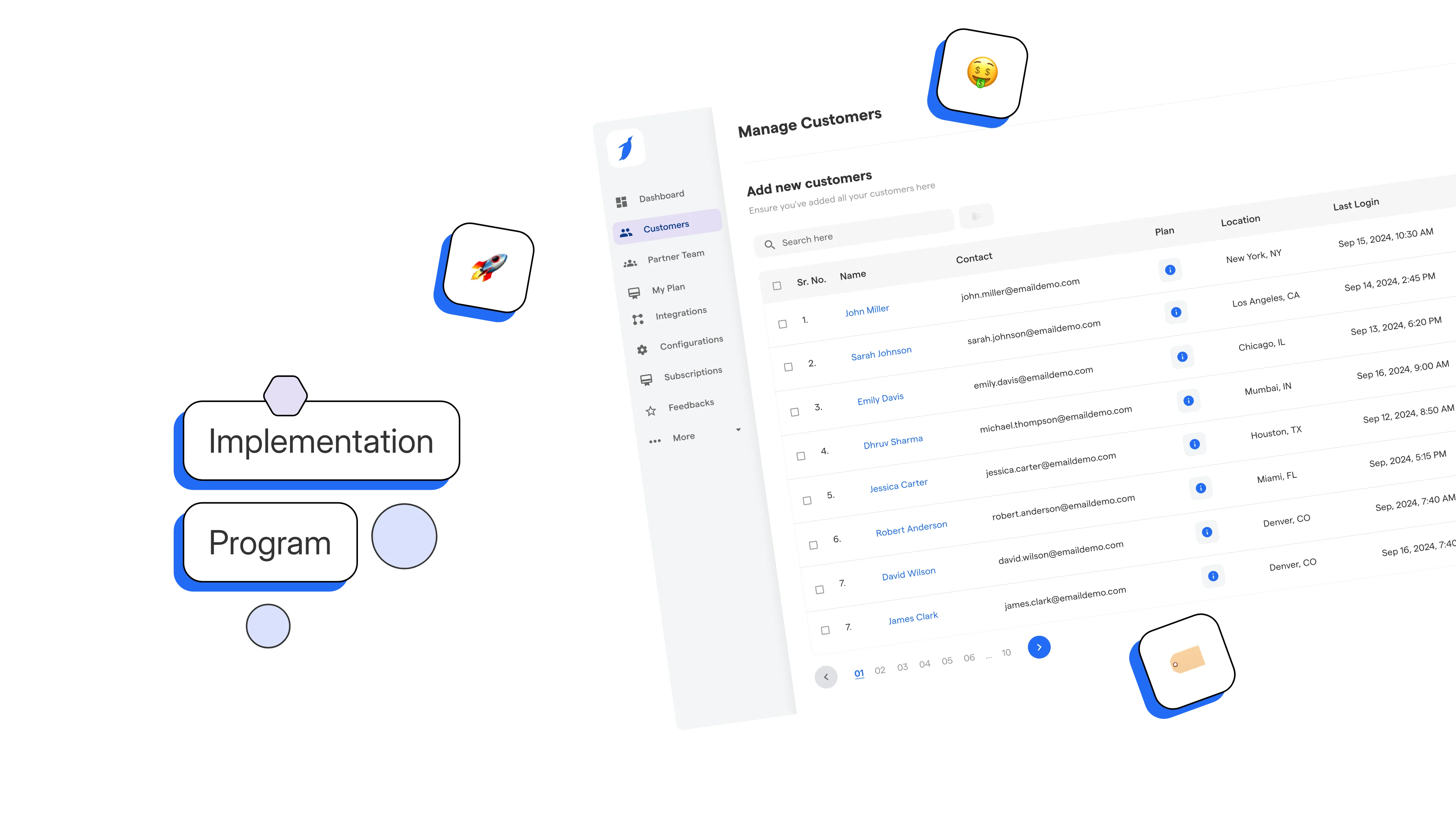
You’ve got zero budget. But you’re good at sales or know a few business owners.
- Problem: You can’t afford a white-label setup. But you still want to sell chatbot services.
- Solution: With reseller programs, you get access to a chatbot platform and earn recurring commission on every sale.
Cost? As low as $15–$30/month.
You don’t worry about support or hosting. The chatbot company handles it.
You focus on finding clients and closing deals.
Here’s the breakdown:
- Reseller fee: $0–$30/month
- Domain (if you want one): optional
- Marketing tools: free or pay-as-you-go
- Outreach: cold emails, LinkedIn, referrals (mostly free)
Skills needed? Low to moderate. You need communication skills and basic understanding of what a chatbot can do.
Example: You join a reseller program. You sell a bot setup for $300, and earn $100 in commission. No tech work. Just sales.
- Do this if: You want to test the waters before going all in.
- Don’t do this if: You want full brand control from day one.
Which Approach is Best for You to Start a Chatbot Business?
Let’s make it simple.
Here are three budget-based strategies so you can take action right away:
1. Budget: Under $50/month — Start as a Reseller
Start small. No platform to manage. No tech skills required.
Focus on getting a few clients. Learn what they need.
Best for students, freelancers, or side hustlers testing the waters.
2. Budget: Around $150/month — Go White-Label
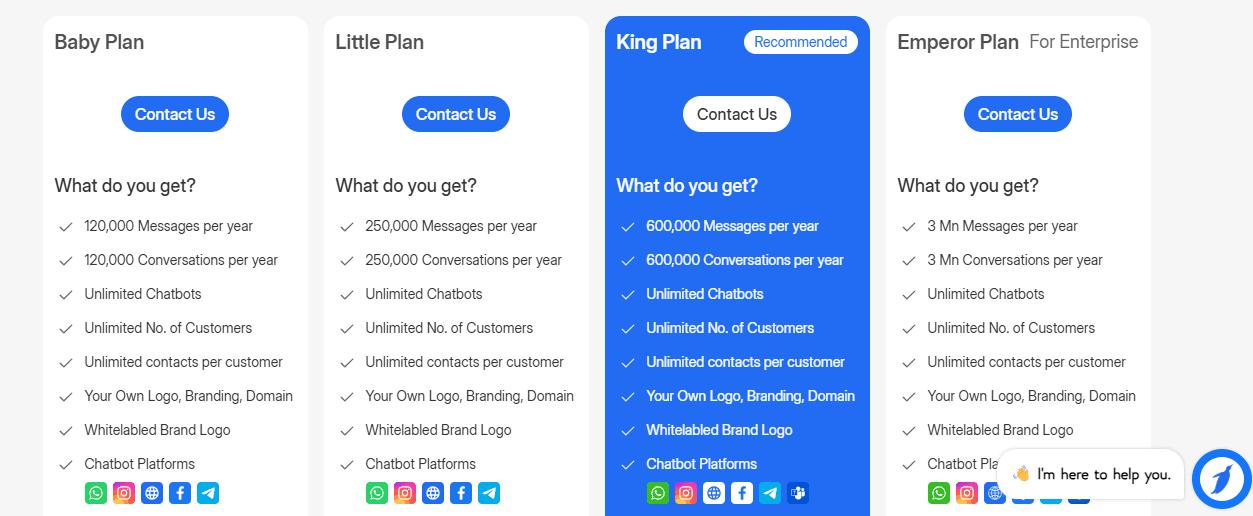
You get your own brand, your own pricing, and a ready-to-use dashboard.
This gives you full control with low overhead.
Great for solo founders or small agencies who want recurring income.
3. Budget: $10,000+ — Build Your Own Platform
Go big. Build something custom. Control every line of code.
But it takes time, money, and a tech team.
Only do this if you’ve got funding and a strong reason to stand out in the market.
But here is the best part: No matter where you start, you can grow.
Some people begin as resellers, then move to white-label. Others skip straight to building their own platform.
As long as you’re solving real problems and showing value, your plan to start a chatbot business can work at any level.
Pick your path. Keep it lean. And start.
Phases of Starting a Chatbot Business
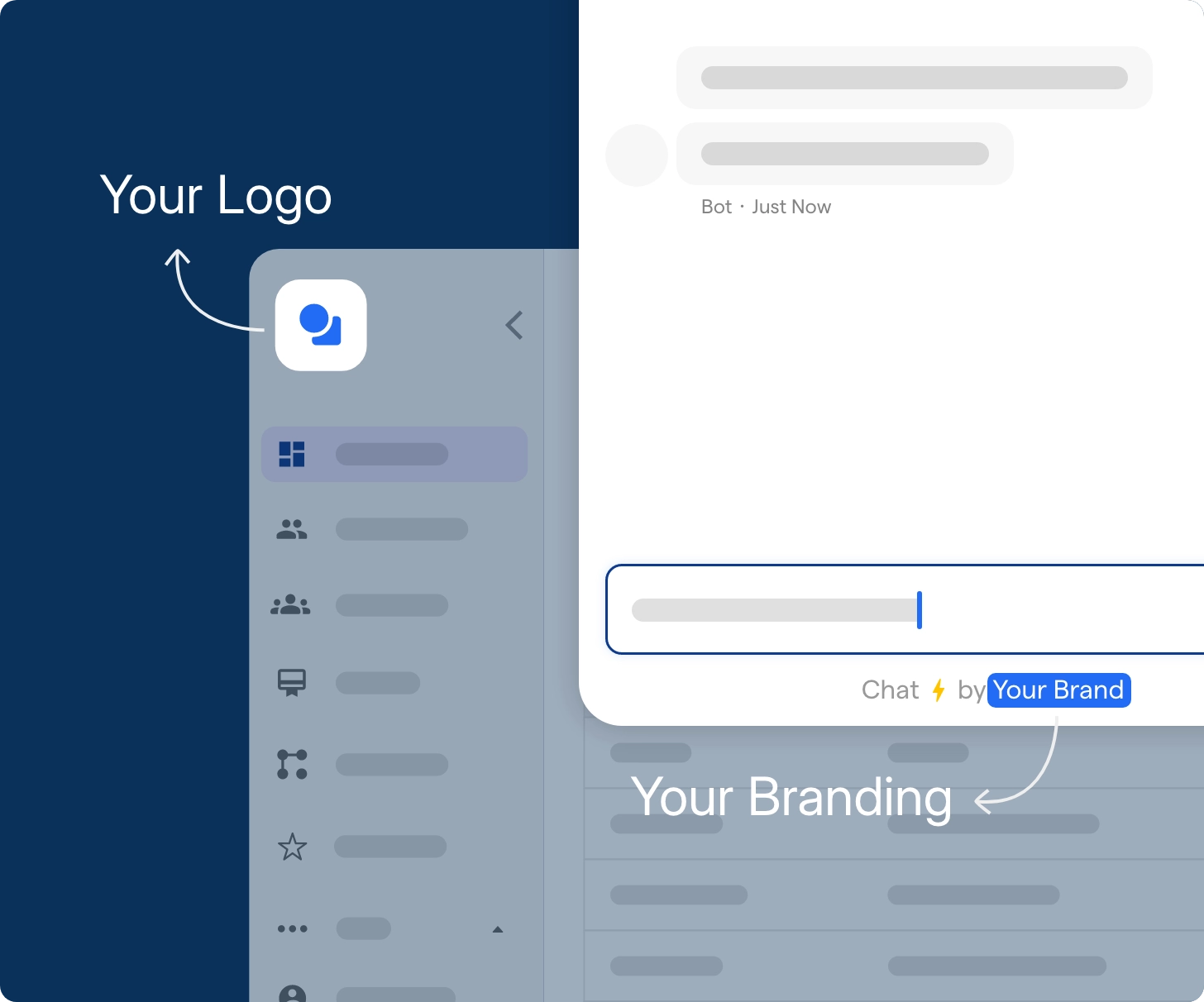
Once you've picked your approach—whether that's white-label, reseller, or building your own—you're not done yet.
To actually start a chatbot business, you'll move through three key phases:
Product, Marketing, and Sales & Support.
Each one builds on the last. And it all starts with the product—what you’re actually offering.
1. Product Phase: Building the Offer for Your Chatbot Business
This is the foundation. Before you worry about landing clients or running ads, you need to know what you’re selling and who it’s for.
Your product isn’t just “a chatbot.” It’s a solution to a real problem. That’s what people will pay for.
Let’s break down how to get this part right.
Choose Your Niche and Target Audience
Trying to offer bots to everyone is a quick way to go nowhere.
Instead, pick a group of businesses you understand. Maybe it’s salons. Maybe it’s real estate agents. Maybe it’s restaurants.
Start with one. Focus is what helps you speak their language and solve their problems.
For example, a gym owner isn’t interested in chatbot features. But if you say, “This bot helps new members sign up even when you’re closed,” you’ve got their attention.
Also think about who in the business you’re selling to. Owners? Managers? Admin staff? Your message needs to match what they care about.
Identify Key Pain Points and Use Cases You Can Automate
This is where you make your offer useful.
Start with asking yourself: what’s wasting your audience’s time? What do they wish they didn’t have to do manually?
That’s where your chatbot comes in.
Common use cases you can offer from day one include:
- Answering FAQs automatically
- Booking appointments without back-and-forth
- Capturing leads through website or social media
- Qualifying prospects before they talk to a human
Let’s say you’re helping a local café. Customers are constantly messaging “Are you open today?” or “Do you have vegan options?”
With a simple bot, the café saves hours a week and gives instant replies. That’s a real, visible win.
This is how you make your chatbot feel necessary, not optional.
Suggested Reading:
20 Chatbot Business Ideas to Earn $10,000 a Month
Decide Your Business Model
Once your offer is clear, you need to decide how you’ll deliver it—and how you’ll get paid.
Here are three solid ways to go:
- One-time projects: Great if you want fast income. Build and hand off the bot.
- Monthly subscriptions: Best if you’re using white-label tools. You set your own pricing and offer support.
- Freelance services: Build bots for other agencies or businesses as a solo expert.
Each one has its own rhythm.
- One-time projects give you flexibility but no recurring income.
- Monthly retainers offer predictable revenue but need more ongoing effort.
- Freelance is flexible, but your income depends on how many gigs you land.
If you’re just starting out, go with the model that matches your time, skills, and comfort level. You can always switch later.
Plan Your Services and Pricing
Now, turn your idea into packages.
Basic. Standard. Premium.
Start with the features. Think:
- Setup only
- Setup + integrations (CRM, Google Sheets, WhatsApp)
- Full funnel automation + ongoing support
Then, price them to match the value.
Pro tip: Bundle services with higher perceived value. Example:
- “Instagram DM bot + lead sheet integration + 1-month support” = $299
Also, offer free trials, or freemium plans with limited features to build trust.
- Don’t do this: Don’t just charge $50 for a basic bot without explaining what’s in it.
- Do this instead: Sell solutions, not bots. Example: “$150/month to capture and convert your website visitors automatically.”
Now you’ve got a clear product strategy—and you're ready to show it off.
2. Marketing Phase: Getting the Word Out
You’ve built your offer. You know your niche. You’ve got pricing and use cases ready.
Now it’s time to let the world know.
Marketing doesn’t have to be complicated. You don’t need a big ad budget or a full team.
But you do need to make your message clear and visible.
Here’s how to spread the word when you start a chatbot business.
Defining Your Offer in Simple Terms
Skip the tech speak. Clients don’t care about “AI” or “flows.”
They care about results.
So talk about your offer the way your customer would describe it.
- Instead of: “I build NLP-powered chatbots that use logic-based triggers...”
- Try: “I help small businesses talk to their customers 24/7, even while they sleep.”
One sounds smart. The other makes money.
Quick tip: Record yourself explaining what you do to a friend. Use that wording in your emails, website, and posts. That’s your real pitch.
Creating a Simple Website or Landing Page
You don’t need a fancy website to look legit.
A clean landing page with your offer, pricing, and a way to contact you is enough.
Here’s what you need on one page:
- A headline that explains what you do
- A short list of benefits (not features)
- Example use cases (like bookings, lead capture, FAQ replies)
- Pricing or packages
- A form or button to book a call
Use tools like Carrd, Framer, or Notion to build it. Cost? As low as $20/year for a domain + $9/month for hosting.
This tiny setup can help you get your first leads without writing a single line of code.
Building a Portfolio with Demos
You don’t need 10 clients to show you’re good. You just need 2 or 3 great demos.
Build sample bots for fake businesses in your niche. Think:
- A restaurant bot that handles table bookings
- A gym bot that shares class schedules
- A real estate bot that qualifies leads
Record short walkthrough videos or screenshots. Explain what the bot does and what problem it solves.
When you share these with prospects, they won’t ask, “Do you have experience?”
They’ll say, “Can you make this for me too?”
How to Get Your First Clients
Start simple. Don’t overthink it.
- Reach out to local businesses via email or Instagram
- Join niche Facebook or WhatsApp groups
- Answer questions on Reddit or Quora related to chatbots
- List your service on Fiverr or Upwork
Keep your pitch short and outcome-focused.
“Hey! I help small businesses capture leads automatically with chatbots. Would you be open to a free 5-minute walkthrough?”
You’re not selling a bot. You’re offering a tool that saves time, money, or both.
Leveraging Free Work or Trials to Get Case Studies
Still struggling to land that first client?
Offer to build a simple bot for free or at a deep discount—on one condition:
They let you use their results as a case study.
One solid testimonial can do more for your business than ten cold emails.
Here’s a real-world play:
You offer a free WhatsApp bot for a local clinic. It saves their front desk 10 hours/week.
Now you can say: “I helped a clinic save 40 hours a month by automating patient queries with a chatbot.”
That’s gold when you're trying to start a chatbot business that gets noticed.
Suggested Reading:
How to Boost Your Revenue with a Whitelabel Chatbot
3. Sales & Support Phase: Closing Deals and Keeping Clients Happy
Now that leads are coming in, it’s time to turn interest into income.
Sales doesn’t have to mean pressure or cold pitches. It’s just about guiding people toward a decision that helps them.
And once they’re in? Support is how you keep them around—and make more money from the same clients.
Here’s how to handle the sales and support phase when you start a chatbot business.
Handling Onboarding & Support
When a client says yes, don’t leave them guessing.
Create a simple onboarding checklist:
- What you need from them (info, login access, brand tone)
- What to expect in the first 7 days
- A short timeline for delivery
Use Google Forms or Notion to collect info.
Then keep them updated, even if it’s just, “Hey! The bot's 50% done. Testing flows today.”
Once the bot goes live, give them a 5-minute walkthrough video they can rewatch anytime.
This shows you're pro, not just another freelancer.
Handling Common Rejection Scenarios
You’ll hear things like:
- “It’s too expensive.”
- “We’re not ready right now.”
- “We already have a bot.”
Don’t panic. That’s normal.
Instead, get curious. Ask:
- “What would make this worth the price for you?”
- “When would be a better time for us to reconnect?”
- “What does your current bot not do that you wish it did?”
Sometimes it's not a no. It’s a not-yet. Follow up in 30 days.
Keep a simple CRM or even a Google Sheet to track who to check in with.
Creating Reusable Templates to Save Time
The more clients you get, the more you'll need to repeat the same stuff.
Save time by turning your best work into templates:
- A restaurant booking bot
- A salon appointment scheduler
- A product recommendation flow for eCommerce
You can tweak the copy and brand for each new client in minutes.
These templates also help you deliver bots faster—and charge better rates for quicker turnarounds.
Do this, not that:
- Don’t build from scratch every time.
- Do create a folder of plug-and-play flows you can copy and customize.
Upselling and Cross-Selling Your Services
Once your client is happy with their first bot, they’re likely to want more.
That’s your cue to upsell:
- “Want to connect this to your CRM?”
- “Should we add a WhatsApp version too?”
- “I can help with email follow-ups to boost leads.”
You can also cross-sell other services like:
- Lead generation pages
- Chatbot analytics
- Copywriting for auto-replies
Just make sure it’s useful to their goal—don’t push what they don’t need.
Building Long-Term Relationships
Repeat clients make business easier.
Check in every month. Ask if the bot is doing what it’s supposed to. Share a new feature they might like.
Even a quick “Hey, I saw this trend in your industry—want to try it in your bot?” can lead to an upgrade.
If you help them grow, they’ll keep you around.
And that’s the secret to long-term revenue when you start a chatbot business that lasts.
Common Mistakes to Avoid When Starting a Chatbot Business
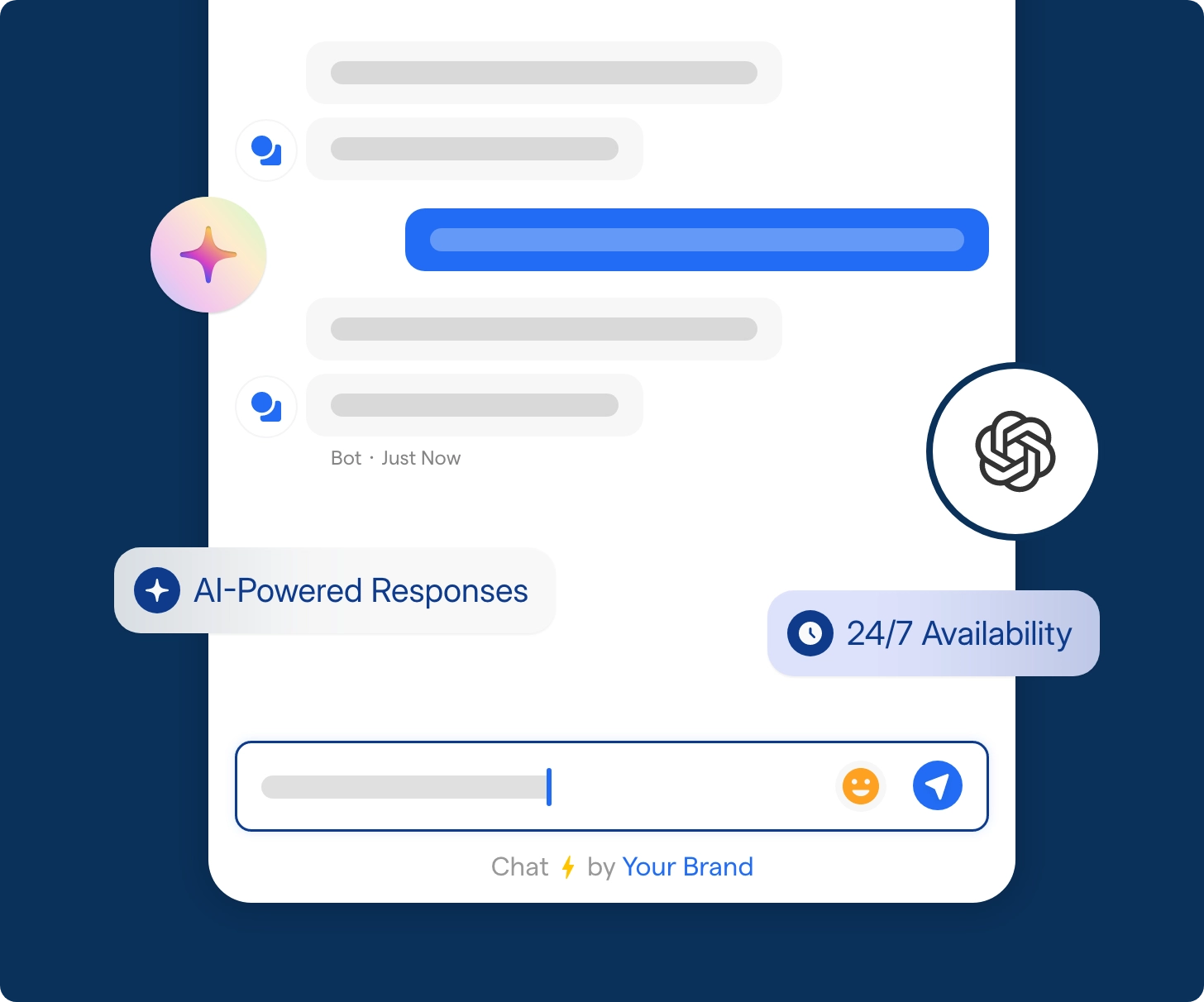
Starting something new is exciting—but it’s also easy to get tripped up.
If you're planning to start a chatbot business, a few early missteps can slow you down or burn out your momentum.
The good news? Most of these mistakes are totally avoidable once you know what to look for.
Here are the biggest ones—and how to dodge them.
1. Selling Features, Not Outcomes
One of the easiest traps to fall into is talking too much about what your bot does—instead of what it solves.
You might say, “This bot uses AI to route queries with natural language triggers.”
Sounds impressive. But a local spa owner doesn’t care.
What they really want to hear is: “This bot helps you book more appointments—even when you’re closed.”
See the difference?
If you only pitch features, your prospect tunes out. If you focus on outcomes, they lean in.
- Do this: Lead with benefits. Back it up with examples.
- Don’t do this: List tech specs first. It confuses and overwhelms non-tech clients.
2. Trying to Serve Everyone
It’s tempting to say, “I build bots for any business, any industry.”
That sounds flexible, but it makes you forgettable.
You’re much better off focusing on one group—at least at the start.
Let’s say you build bots for gyms.
Now your pitch is laser-focused: “I help gyms capture leads, book sessions, and reduce no-shows with automation.”
You’ll close more deals because your offer feels custom—even if the bot is a template.
This makes your plan to start a chatbot business way more profitable, way faster.
Suggested Reading:
7 Tips for Effectively Reselling Chatbot Solutions
3. Underpricing Your Work
When you're just getting started, it's easy to charge low—just to get clients.
But if you price too low, people won’t value what you offer.
They’ll treat it like a tool, not a solution.
Worse, you’ll burn out fast doing $99 projects that take 10 hours.
Price based on value and results. Not time spent.
If your bot saves a business 5 hours a week? That’s worth more than $100.
Instead of discounting, try this: Offer a free trial or a limited version. Let them see the value first.
Then upsell the full experience.
4. Waiting for Everything to Be Perfect
Many people delay launching because the website isn’t “ready” or they haven’t created the perfect pitch deck.
But here's the truth:
You only get clarity by doing—not by planning.
Start small. Build a bot for a friend’s business. Offer it for free in exchange for feedback.
Then refine. Iterate. And improve as you go.
The sooner you put your offer out there, the faster you’ll grow.
5. Ignoring Client Support After the Sale
Landing a client is only the beginning.
If they get confused using the bot, they’ll stop using it. If it breaks, they’ll leave.
You don’t need to offer 24/7 support—but you do need a simple system.
Create a basic how-to guide. Offer quick check-ins after launch.
Even a “Need help?” button inside the bot goes a long way.
Clients who feel supported will stay longer, pay more, and refer others.
When you start a chatbot business, success isn’t just about what you offer. It’s also about what you avoid.
Dodge these early mistakes, and you’ll save time, earn more, and build stronger client relationships—right from day one.
Final Thoughts & Next Step: Start Your Chatbot Business with BotPenguin
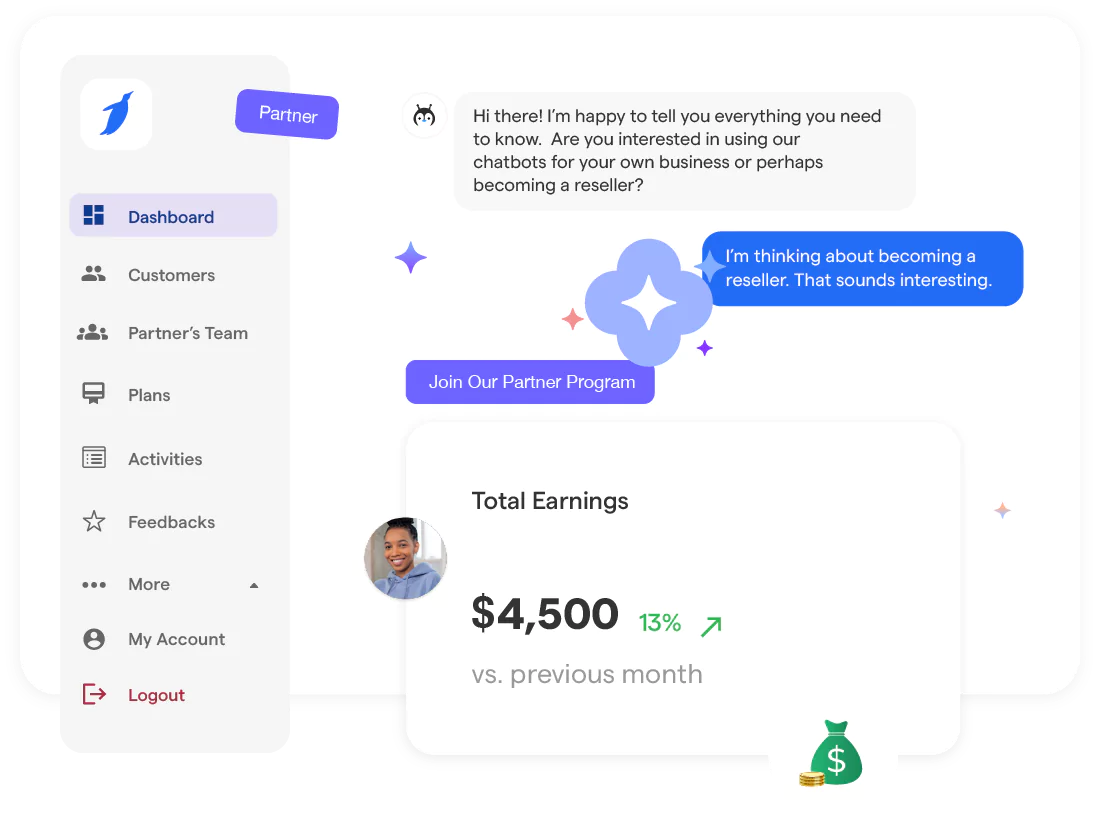
You’ve made it to the end. That says something.
You’re serious about launching your own chatbot business.
Maybe you’ve got the skills. Maybe you’ve got the drive.
But here’s what most people get stuck on: the tech. Or the setup. Or how to scale without burning out.
You want to get your first few clients. Build a system. Start earning.
But building from scratch? That’s slow, expensive, and way too technical.
And if you wait too long, someone else will close the deal you could’ve won.
Here’s the good news—you don’t need to start from zero.
Meet BotPenguin: The Smart Way to Start a Chatbot Business
If you're ready to go live with your offer fast—and actually make money doing it—BotPenguin gives you everything you need in one place.
It’s a no-code, omnichannel AI chatbot builder made for people like you.
Whether you're a solo hustler or starting an agency, BotPenguin helps you set up, sell, and scale your own chatbot business under your name and your brand.
And yes, it comes with white-label and reseller plans so you keep 100% of the profit.
What You Can Do with BotPenguin:
✅ Make your own pricing plan with value-added services—charge what you want
✅ Full branding control and a white-labeled partner dashboard
✅ Sell in multiple currencies—no limits on geography
✅ Offer a no-code chatbot builder to your own clients
✅ Provide smart AI chatbots powered by ChatGPT, Claude, Gemini, DeepSeek, and more
✅ Build multilingual bots trained on your client’s website, PDFs, Google Drive, Notion, Sheets, and more
✅ Offer in-demand tools like WhatsApp bulk messaging, Instagram DM automation, appointment booking, customer service bots, and more
Why It Works
Let’s say you want to help restaurants automate bookings and collect leads via Instagram DMs.
You don’t need to build that system from scratch.
With BotPenguin, you clone a template, adjust the flows, connect WhatsApp or Instagram, and launch it in hours—not weeks.
Then you charge $199/month or $499 setup—whatever your market supports.
You keep all the revenue.
No tech headaches. No long wait. Just clients, bots, and money coming in.
Ready to Take the Next Step?
You’ve already done the research.
You’ve got the roadmap.
Now it’s time to build the business.
Let BotPenguin be your tech partner—while you focus on what matters: selling, serving clients, and growing fast.
👉 Get Started with BotPenguin Now — and launch your chatbot business with everything built in.
Frequently Asked Questions (FAQs)
Can I run a chatbot business while working a full-time job?
Yes, many start part-time. With tools like BotPenguin, you can build and manage bots quickly. Start with one client and scale as you gain confidence and income.
Do I need to register a company to start a chatbot business?
Not immediately. You can start as a freelancer or sole proprietor. Once you get consistent clients, consider registering to manage taxes, payments, and branding better.
What are the best industries to target for chatbot services?
Start with industries that rely on lead capture or appointment booking—like salons, real estate, clinics, and eCommerce. These sectors often see fast ROI from chatbots.
How long does it take to build a chatbot for a client?
Using no-code platforms, you can build a working chatbot in 2–5 hours or may be less if you already know how to do it. More advanced bots with integrations may take 1–2 days, depending on complexity.
Can I offer chatbot services globally or just locally?
You can serve clients globally. Tools like BotPenguin support multiple languages, currencies, and channels—so you’re not limited to your region or timezone.
What’s the best way to collect payments from chatbot clients?
Use tools like PayPal, Stripe, or Wise. For monthly plans, consider recurring invoicing software or subscription tools like Zoho or PayKickstart.
How do I handle client requests for features I don’t know yet?
Be honest, then research or consult with your platform’s support. Most platforms like BotPenguin offer documentation or support teams to help with advanced features.
How do I know if my chatbot is working well for the client?
Track key metrics: number of leads captured, conversion rate, response time, and drop-off rate. Regular client check-ins help identify improvement areas and upsell opportunities.
.webp)
